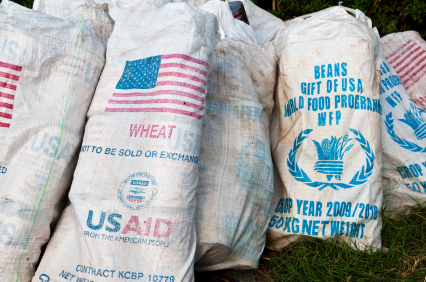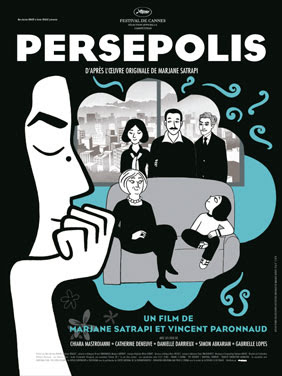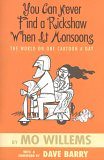new posts in all blogs
Viewing: Blog Posts Tagged with: Ethiopia, Most Recent at Top [Help]
Results 1 - 16 of 16
How to use this Page
You are viewing the most recent posts tagged with the words: Ethiopia in the JacketFlap blog reader. What is a tag? Think of a tag as a keyword or category label. Tags can both help you find posts on JacketFlap.com as well as provide an easy way for you to "remember" and classify posts for later recall. Try adding a tag yourself by clicking "Add a tag" below a post's header. Scroll down through the list of Recent Posts in the left column and click on a post title that sounds interesting. You can view all posts from a specific blog by clicking the Blog name in the right column, or you can click a 'More Posts from this Blog' link in any individual post.

By: Alice,
on 3/30/2012
Blog:
OUPblog
(
Login to Add to MyJacketFlap)
JacketFlap tags:
Kenya,
Current Affairs,
BBC,
Ethiopia,
Somalia,
famine,
Hunger,
Niger,
west africa,
Live 8,
Bob Geldof,
*Featured,
al-Shabab,
Gleneagles,
Make Poverty History<,
Sahel,
Add a tag
By Peter Gill
A fresh famine is threatening Africa, this time in the semi-desert Sahel region of Francophone West Africa. The greatest concern is Niger where a third of the population cannot be sure they will be able to feed themselves or even be fed over the next few months. In the region as a whole there are some ten million people at risk.
The process by which the world has learned of this crisis is familiar. The big relief agencies are allied with the broadcasters, notably the BBC, to report on the growing hunger. This publicity puts pressure on official western aid donors, governments and others, to make sure that threats of mass starvation do not turn into catastrophic reality. Relief agencies add to the pressure by reminding donors that delays to similar East African alerts last year may have contributed to upwards of 50,000 deaths in Kenya, Ethiopia and Somalia.
As a means of raising the profile of hunger emergencies, the media-aid agency connection has been a familiar pattern for decades. It is underpinned by increasingly sophisticated international early warning systems that monitor rainfall and cropping, and predict with accuracy the human consequences of drought and poor harvests. All but the most negligent governments in Africa take their responsibilities more seriously than they did, and mobilise local resources alongside the international efforts. The result is that the world should never again witness suffering on the scale seen in Ethiopia in the mid-1980s where 600,000 died of starvation and a new era in the aid relationship was born.

For the past quarter century, the rich North has not been allowed to forget the poor South. As western economies boomed, money flowed into the official and private aid agencies and flowed out again to the Third World. It was a movement that reached its high point in 2005 with the Gleneagles summit, Bob Geldof’s Live 8 and Make Poverty History. Yet there has been no reduction in the number of hungry people in the world; the reverse, in fact — the number has grown and major food emergencies persist.
The worst of them are those exacerbated by conflict. Fighting hampers relief and restricts the media from detailed reporting on the ground. The epicentre of last year’s East African famine was Somalia whose people have been the victims of chronic political instability for the past 20 years and where the militant Islamist group al-Shabab crudely prevented relief from reaching the starving under its control. In neighbouring Ethiopia, the worst of the suffering last year was in the border Somali region where central government faces an armed revolt — just as happened in the North of the country in the 1980s — and across the continent in Niger the current crisis is made worse by an influx of refugees from insurgencies in Nigeria and Mali.
If the world is getting better at managing the effects of extreme poverty, it is simultaneously failing to make poverty history. After more than half a century of application, the promised transformative effects of aid in the poor world have yet to be realised. Major western economies are now losing ground to new powers in the East, and with it the chance to direct the development effort in future. Western aid agencies have concentrated their efforts on health, education and welfare, yet all the new signs of African prosperity are to be found in home-grown entrepreneurship, in a growing middl

By: Kirsty,
on 7/13/2011
Blog:
OUPblog
(
Login to Add to MyJacketFlap)
JacketFlap tags:
peter gill,
*Featured,
famine and foreigners,
FEWS NET,
food crisis,
horn of africa,
meles zenawi,
OCHA,
Economics,
Africa,
Kenya,
Current Events,
Ethiopia,
USAID,
Somalia,
famine,
World Food Programme,
development,
UN,
Add a tag
By Peter Gill
International responsiveness to the food crisis in the Horn of Africa has relied again on the art of managing the headlines. Sophisticated early warning systems that foresee the onset of famine have been in place for years, but still the world waits until it is very nearly too late before taking real action – and then paying for it.
The big aid organisations, official and non-government, are right to say they have been underlining the gravity of the present emergency for months, at least from the beginning of the year. On June 7 FEWS NET (the Famine Early Warning Systems Network funded by USAID) declared that more than seven million in the Horn needed help and the ‘current humanitarian response is inadequate to prevent further deterioration.’ Two seasons of very poor rainfall had resulted ‘in one of the driest years since 1995.’ Still the world did not judge this to be the clarion call for decisive intervention.
Three weeks later, on June 28, OCHA (the UN’s Office for the Coordination of Humanitarian Affairs) said that more than nine million needed help and that the pastoral border zones of Somalia, Ethiopia and Kenya were facing ‘one of the driest years since 1950/51.’ Six decades! Two generations! A story at last! The media mountain moved, and the NGO fund-raisers marched on behind.
I have The Times of July 5 in front of me. ‘Spectre of famine returns to Africa after the worst drought for decades,’ says the main headline in World news. On page 11 there is a half-page appeal from Save the Children illustrated with a picture of a six-week old Kenyan called Ibrahim ‘facing starvation.’ On page 17 Oxfam has its own half page saying that ‘more than 12 million people have been hit by the worst drought in 60 years.’ The Times that day also carried a Peter Brookes cartoon of a hollow-faced African framed in the map of Africa, with his mouth opened wide for food.
So, for 2011, an image of Africa has again been fixed in the western consciousness. It is an image of suffering – worse, of an impotent dependence on outsiders – that most certainly exists, but is only part of the story, even in the Horn.
The western world may understand something of the four-way colonial carve-up and the post-colonial disaster that overtook the Somali homeland, but it certainly has no proper answers to the conflicts and dislocation that lead to starvation and death. In northern Kenya, to which so many thousands of Somali pastoralists have fled in recent months, the West does have an answer of sorts – it can feed people in the world’s largest refugee camp, in the thin expectation of better times back across the border. Then there is Ethiopia, with several million of its own people needing help, its own Somali population swollen by refugees, and the country for ever associated with the terrible famine of 25 years ago which launched the modern era of aid.
Here it is possible to make some predictions. There will be no widespread death from starvation in Ethiopia, not even in its own drought-affected Somali region where an insurgency promotes insecurity and displacement. New arrangements between the Ethiopian government and the UN’s World Food Programme have insured more reliable and equitable food distribution, and the Government presses on with schemes to settle pastoralists driven by persistently poor rains from their semi-nomadic lifestyles.
The government of Meles Zenawi, which has just marked 20 years in power, has on the whole a creditable record in response to the prospect of famine.In 2003/4 the country faced a far larger food crisis than it did it in 1984, but emerged from it with very few extra deaths. In the former famine lands of the North where there is an impressive commitment to grass-roots development there is almost no chance of a retu

By: Kirsty,
on 7/7/2010
Blog:
OUPblog
(
Login to Add to MyJacketFlap)
JacketFlap tags:
aid,
famine,
development,
band aid,
Live 8,
live aid,
peter gill,
Music,
History,
Economics,
africa,
china,
UK,
Politics,
A-Featured,
Media,
Ethiopia,
Early Bird,
poverty,
Add a tag
Peter Gill is a journalist specialising in developing world affairs, and first travelled to Ethiopia in the 1960s. He has made films in and reported from Gaza, Lebanon, Afghanistan, South Africa, Uganda, and Sudan, as well as Ethiopia. He recently led BBC World Service Trust campaigns on leprosy and HIV/AIDS in India. His new book is Famine and Foreigners: Ethiopia Since Live Aid, which is the story of what has happened in the country since the famous music and television events 25 years ago.
This third and final part of our ‘Ethiopia Since Live Aid’ blog feature is an original post by Peter Gill, in which he discusses the West’s view of aid and Africa. If you missed it, on Tuesday we read an excerpt from the book, and yesterday we ran an exclusive Q&A with Peter.
This 2010 ‘Summer of Africa’ has been promoted as a moment of transformation – an acknowledgment that the continent may at last be on the move, that it may be beginning to cast off its image as global basket case, ceasing to be a ‘scar on the conscience of humanity,’ in the phrase of former Prime Minister Tony Blair.
It was 25 years ago in July that a great Ethiopian famine and the Live Aid concert which it inspired underlined the physical and moral enormity of mass death by starvation. These events defined popular outrage at the human cost of extreme poverty and began to build an extraordinary consensus around the merits of aid. A generation later, in the teeth of financial gales in the rich world, this consensus is under increasing scrutiny.
Of course aid works and it works at many levels. Charity is an essential characteristic of social relationships. It saves lives and it helps individuals, families, sometimes whole communities to improve their existence. What the big aid flows – from governments and charities – have not done is to change the face of poor societies, to overcome the disgrace of extreme poverty.
Now the western world may have missed its opportunity to fix the problem. It may no longer have the means. It is also far too preoccupied with addressing the processes of how best to deliver aid, and has failed to sort out whether it had the right strategy in the first place.
What went wrong, I believe, is that we kept seeing Africa in our own image – as we would like it to be, rather than as it was. The colonial period may have become history, but the colonial mindset of ‘we-know-best’ has surely persisted. We compounded the error by allowing our hearts to rule our heads in how we spend the aid money. We have been more troubled by the symptoms of poverty than to see where our help was most needed.
Our fortunate way of the life in the West – prosperity allied with liberal democratic forms of government – may be the envy and the aspiration of many in the poor world, but did that give us the right in the name of ‘good governance’ to insist that there are quick and easy steps to achieving it? In the decades after Europe’s helter-skelter decolonisation, was it realistic to ignore the lessons of our own tortured political evolution and demand swift democratic reform as a condition of aid?
Our rich world sensibilities have, rightly, been offended by deaths from preventable diseases and we have, again rightly, poured money into ever more ambitious health initiatives. But we have made little corresponding effort to help African women plan their families by plugging the huge gap in contraceptive needs. Aid expenditure on family planning has actually fallen in the past de
 Today, I am sharing with you another story from the book Half the Sky by Nicholas D. Kristof and Sheryl WuDunn. Mahabouba did not die in childbirth or due to giving birth, but she did become incontinent. According to Kristof and WuDunn, more than 3 million women and girls are incontinent due to the lack of medical care during childbirth.
Today, I am sharing with you another story from the book Half the Sky by Nicholas D. Kristof and Sheryl WuDunn. Mahabouba did not die in childbirth or due to giving birth, but she did become incontinent. According to Kristof and WuDunn, more than 3 million women and girls are incontinent due to the lack of medical care during childbirth.
Here’s Mahabouba’s (an Ethopian girl) tragic story: When her parents divorced when she was a small child, she was given to her father’s sister, who didn’t give her an education and treated her as a servant. Mahabouba and her sister ran away to town and worked as maids for room and board. A neighbor told her that he could find better work for her when she was 13 years old, but he actually sold her for $10 to a 60-year-old man as a 2nd wife. The man raped and beat her. She got no sympathy from the first wife either, who also beat her out of jealousy. Mahabouba tried to run away, but she was always caught.
She soon became pregnant, and so the beatings didn’t happen as often and she had more freedom. When she was 7 months pregnant, she ran away. She fled to town, but the people said they would take her back to the man, so she ran to her village. She found her immediate family gone, and nobody wanted to help her because she was pregnant and someone else’s wife. She went to drown herself in the river, but her uncle found her and put her in a little hut by his house.
She had no midwife, and so she tried to have the baby by herself, but her pelvis hadn’t grown large enough to accommodate the baby’s head (since she was so young) and she ended up in obstructed labor. After seven days, she passed out and then someone summoned a birth attendant. When she woke up, she discovered her baby was dead and she had no control over her bladder or bowels. She couldn’t walk or stand. The people in the village thought she was cursed, and she should leave. But her uncle was torn. He gave her food and water, but moved her hut to the edge of the village and took the door off so there was no protection from the hyenas.
The first night, the hyenas came. Even though she couldn’t move her legs, Mahabouba warded them off with a stick at 14 years old. She knew to survive she had to get out of the village. She had heard of a Western missionary in a nearby village, and so she crawled for almost two days to the next village, up to the missionary doorstep. The missionary saved her and took her to the Addis Ababa Fistula Hospital.
If you want to read what happens to Mahabouba at the fistula hospital or the wonderful work they do there, please buy the book: Half the Sky.
Tomorrow, I will tell you a way you can help girls like Mahabouba.

By: EDonegan,
on 4/14/2009
Blog:
OUPblog
(
Login to Add to MyJacketFlap)
JacketFlap tags:
Sudan,
Gérard Prunier,
Notes From Africa,
Eritrea,
G20 Summit,
Khartoum,
SPLA,
History,
africa,
Religion,
Politics,
Current Events,
A-Featured,
Media,
Ethiopia,
Add a tag

By Gérard Prunier
During the years of civil war in Sudan, both the Eritrean People’s Liberation Front (EPLF) and the Ethiopian Peoples’ Revolutionary Democratic Front (EPRDF) considered the Sudan People’s Liberation Army (SPLA), then closely allied to the communist Derg, to be an enemy.
After Mengistu’s regime had been overthrown, both the EPLF and the EPRDF guerrilla movements, which had ascended to power with Khartoum’s help, realized that their Sudanese ally was not so friendly. Yet there was a modicum of difference in their experience with Khartoum’s hostility: in the case of Eritrea it was plain and open, Khartoum supported the Eritrea Jihad armed movement and Eritrea’s President, Issayas Afeworki quickly invited the SPLA into Eritrea to retaliate against Sudan.
In the case of Ethiopia’s Prime Minister, Meles Zenawi, although duly suspicious of Khartoum’s policies, he nevertheless tried to keep a more or less neutral stance towards the Sudan’s Muslim Brothers’regime. Zenawi fought against Sudanese military encroachments when they took place - mostly through helping the Oromo Liberation Front (OLF) rebels. He even launched Operation Black Fox deep into Sudan in 1994, but later expelled the SPLA from Ethiopia in 1999. Why? Because by then the relationship between Asmara, Eritrea and Khartoum had turned 180° due to the Ethio-Eritrean War of 1998-2000.
With the war, Issayas stopped supporting the SPLA and decided to woo Khartoum. As a result, Meles let the former guerrillas come back to Addis-Ababa after they “regularized” their diplomatic status by signing the so-called “Consolidated Peace Agreement” (CPA) with the northern government in January 2005. Yet Meles kept an even balance between politeness to the North and friendship with the South. Not so in the course followed by Asmara, which progressed deeper and deeper with Khartoum as its own quarrel with the US grew. Things became worse with the support given by the Eritreans to the radical Islamist Shebab then fighting the Ethiopian Army in Somalia.
This game of strategic musical chairs took on a new turn when President Omar el-Bashir recently visited Asmara. Bashir was, of course, invited in open defiance of the March 4th ICC indictment, both to score a point against the international community (read “the US”) and to cement Issayas’ ever growing involvement with the Muslim and Arab world. This confirmed and accelerated Addis-Ababa’s rapprochement with Southern Sudan. Already in February, Ethiopia announced that it had contracted a Chinese company to build a $25m highway between Gambela, Ethiopia and Akobo. What it had not announced was that it was also giving the Juba government discreet but growing military support. The relationship has now gone even deeper since the Ethiopian Prime Minister became an international advocate for the SPLA.
On March 31stthe Presidential Affairs Minister of the Southern Sudan government (GoSS), Luka Biong Deng, asked Ethiopian Prime Minister Meles Zenawi to raise the issue of South Sudan’s fiscal crisis at the G20 Summitin London the following Thursday. Due to a drop in world oil prices, the GoSS, which gets 99% of its income from the oil money payments transferred by Khartoum, has practically gone bankrupt. So now in a new twist of fate Meles finds himself being an advocate for the SPLA he had once banned from Ethiopian territory, while Issayas Afeworqi embraces President Bashir against whom he used to support that selfsame SPLA.
Of course, the first underlying layer of logic remains, as ever, the Ethio-Eritrean mutual hostility. Forty-eight years after the beginning of the Eritrean war of independence, the knives are still drawn. And Sudan remains the third angle of the triangle, now cozying up to one of the players and then trying to stab him.
Among students of the Horn’s regional history, the prize money goes to those who can explain the underlying logic of the continuities buttressing these apparent contradictions. Any takers?
Gérard Prunier is a widely acclaimed journalist as well as the Director of the French Centre

for Ethiopian Studies in Addis Ababa. He has published over 120 articles and five books, including
The Rwanda Crisis and
Darfur: A 21st Century Genocide. His most recent book,
Africa’s World War: Congo, the Rwandan Genocide, and the Making of a Continental Catastrophefocuses on Congo, the Rwandan genocide, and events that led to the death of some four million people. Living in Ethiopia allows Prunier a unique view of the politics and current events of Central and Eastern Africa. Be sure to check back on Tuesdays to read more
Notes From Africa.


By: EDonegan,
on 2/24/2009
Blog:
OUPblog
(
Login to Add to MyJacketFlap)
JacketFlap tags:
Religion,
Politics,
Current Events,
A-Featured,
Media,
Ethiopia,
Somalia,
Rwanda,
Gérard Prunier,
Notes From Africa,
AMISOM,
Sheikh Sarif Sheikh Ahmed,
Yusuf Abdullahi,
Add a tag

By Gérard Prunier
The January 30th election that named the moderate Islamist leader, Sheikh Sharif Sheikh Ahmed to the presidency of the Somalia Transitional Federal Government (TFG), was an opportunity that should not be overlooked. Why? Because Somalia has been without a functioning government since the fall of Mohamed Siad Barre eighteen years ago.
Since then, the international community has organized no less than fourteen “conferences of national reconciliation,” each supposed to give birth to a new government. Meanwhile, the radical Islamist movement has kept growing and in 2006 the CIA sponsored a gruesome alliance of warlords to eliminate them from the picture. Not only did the CIA fail, but they caused the public to support the Islamists (who had only a limited following so far), leading to the Union of Islamic Courts (UIC) taking power in Mogadiscio. The UIC was a mixture of good (law, order, fighting piracy and contraband) and bad (religious intolerance and Puritanism). But for the first time in years, it enabled the population to breathe a bit more freely and violence diminished drastically. There were various trends within the UIC, including one of ultra-nationalism, which was of course very anti-Ethiopian.
This mixture of aggressive nationalism and radical Islamic tendencies acted like the proverbial red flag waved under the nose of the bull. In December 2006, the Ethiopian Army made a dash  for Mogadiscio and occupied the capital. Sheikh Sharif, who had been the leader of the moderate wing of the UIC joined his colleagues in their common exile in Asmara, Eritrea (Eritrea, as usual, was happy to accommodate anything inimical to the enemy Ethiopian regime) and became one of the activists of the anti-Ethiopian resistance.
for Mogadiscio and occupied the capital. Sheikh Sharif, who had been the leader of the moderate wing of the UIC joined his colleagues in their common exile in Asmara, Eritrea (Eritrea, as usual, was happy to accommodate anything inimical to the enemy Ethiopian regime) and became one of the activists of the anti-Ethiopian resistance.
Sheikh Sharif quickly parted ways with the radicals led by Sheikh Hassan Dahir Aweys. Like Sheikh Aweys, Sheikh Sharif belonged to the Hawiye clan which was spearheading the war against the Ethiopians. Sheikh Sharif believed that a workable authority had to include a broader political and clanic spectrum. He left Eritrea and started negotiating with the Ethiopia-backed TFG president, Yusuf Abdullahi. Yusuf, a cranky veteran of opposition politics in Somalia (he had led a coup against Siad Barre back in 1978) had a questionable and violent past. Regardless, he had been picked by both the international community and Addis-Ababa to head the TFG back in 2004. Yusuf refused to deal honestly with the opening he was being offered and his refusal to see beyond the narrow clanic circle of his Majerteen supporters led to his eventual downfall. He quarreled with his own Prime Minister and even his Ethiopian sponsors finally got tired of him.
There were sixteen candidates for Yusuf’s succession at the Djibouti meeting on January 30th and the fact that Sheikh Sharif was picked is symptomatic. For starters, he is the man who had been kicked out of Mogadiscio by the Ethiopian Army and described by the Americans as an “extremist.” To be honest, some of his associates are extremists, but many others are simply nationalists who are tired of disorder, warlordism, and foreign intervention. He represents the average Somali population, even if some of his views are not very palatable for Westerners. In the present circumstances Sheikh Sharif is capable of federating many different trends and can stand up to the al-Qaida linked real radicals (of the al-Shebab movement); it is something a pro-western leader could not do.
Now the international community is sponsoring a force of about 3,000 foreign soldiers (Ugandans and Burundians) sent by the African Union under the name of African Union Mission in Somalia (AMISOM). The soldiers are supposed to “stabilize” the situation. Yet, on February 2nd these soldiers acted panicked, under-trained, isolated, and lost. They opened fire on a crowd of civilians after being targeted by an al-Shebab terrorist attack. AMISOM killed thirty-nine people and wounded twice that number. The UN representative, Ahmedou Ould Abdallah, quickly denied the massacre and even compared the Somali journalists who had reported it to the Rwandese genocidaire Radio Télévision Libre des Mille Collines. It was an atrociously unfair comparison, as the Somali journalists have paid an inordinately high price for keeping the freedom of information alive in such terrible circumstances. Many have died in the line of duty.
AMISOM soldiers have to go. They serve no military purpose, they antagonize the public by their violence, they are incapable of keeping any kind of order, and they gravely compromise the chances of success of the new president. After the massacre, the al-Shebab radicals denounced Sheikh Sharif as an ally of the Americans and the Ethiopians. Declaring him not fit to rule the country. The danger is that, once more, like in 2006, those Islamists with whom it would be possible to work with will find themselves marginalized and eliminated while Somalia would lose still another chance and sink again into a new maelstrom of violence.
Gérard Prunier is a widely acclaimed journalist as well as the Director of the French Centre  for Ethiopian Studies in Addis Ababa. He has published over 120 articles and five books, including The Rwanda Crisis and Darfur: A 21st Century Genocide. His most recent book, Africa’s World War: Congo, the Rwandan Genocide, and the Making of a Continental Catastrophe focuses on Congo, the Rwandan genocide, and events that led to the death of some four million people. Living in Ethiopia allows Prunier a unique view of the politics and current events of Central and Eastern Africa. Be sure to check back on Tuesdays to read more Notes From Africa.
for Ethiopian Studies in Addis Ababa. He has published over 120 articles and five books, including The Rwanda Crisis and Darfur: A 21st Century Genocide. His most recent book, Africa’s World War: Congo, the Rwandan Genocide, and the Making of a Continental Catastrophe focuses on Congo, the Rwandan genocide, and events that led to the death of some four million people. Living in Ethiopia allows Prunier a unique view of the politics and current events of Central and Eastern Africa. Be sure to check back on Tuesdays to read more Notes From Africa.


By:
Aline Pereira,
on 12/21/2008
Blog:
PaperTigers
(
Login to Add to MyJacketFlap)
JacketFlap tags:
Ethiopia,
Books at Bedtime,
The Tiger's Bookshelf,
reading aloud to children,
multicultural children-s books,
British Library,
Index of Authors,
L Authors,
W Authors,
R Title,
Index of Book Titles,
H Title,
A Christmas Carol,
Elizabeth Laird,
Ian Wallace,
Jean de Brebeuf,
The Huron Carol,
The Road to Bethlehem,
Canada,
Christmas,
Add a tag
We have just broken up from school for the holidays and our thoughts are turned towards Christmas next week. As well as reading Dickens’ A Christmas Carol together for the first time, which we all greatly enjoyed, we have been reading other stories with a Christmas setting, including two multicultural versions of the Nativity story, the birth of Jesus.
 The first is The Road to Bethlehem: A Nativity Story from Ethiopia told by Elizabeth Laird (Collins, 1987). Elizabeth Laird has spent a lot of time in Ethiopia gathering stories from the oral tradition and her writing here certainly asks to be read aloud - not only is the story told simply with plenty of direct speech to bring it alive, but for those children who are familiar with the story from their own traditions, there is likely to be a good deal of intrigued discussion in which the differences are explored, including new characters and miracles.
The first is The Road to Bethlehem: A Nativity Story from Ethiopia told by Elizabeth Laird (Collins, 1987). Elizabeth Laird has spent a lot of time in Ethiopia gathering stories from the oral tradition and her writing here certainly asks to be read aloud - not only is the story told simply with plenty of direct speech to bring it alive, but for those children who are familiar with the story from their own traditions, there is likely to be a good deal of intrigued discussion in which the differences are explored, including new characters and miracles.
The illustrations too are full of extra fascinating details - their vibrancy and appeal to young listeners/readers make it hard to take on board that they are taken from 200-year-old Ethiopian manuscripts in the British Library! Laird has added fascinating notes to each picture, which can be dipped into alongside reading the text - one Older Brother was particulary struck by was an episode on the Flight into Egypt showing arrowheads sticking out of the road to stop them: “but Mary took the hand of her Child, and walked through unharmed.”
 The second book is one I blogged about last year but didn’t actually manage to share with my boys - however, we have now read together Ian Wallace’s beautifully illustrated version of The Huron Carol (Groundwood, 2006), based on an English translation of the Christmas carol written by a French Jesuit missionary, Father Jean de Brébeuf, for the Huron people in the 1600s. After reading through the first verse together line by line with its double-page-spread illustration, showing the people, landscapes and fauna of its Canadian roots, we have really enjoyed singing the whole carol from the music and words given at the end - in the original Huron, in French and in English. As we have pored over the familiar characters of the story in an unfamilar setting, and the baby Jesus wrapped in fur, surrounded by wolves and beavers, we have explored the reasons that the carol came into being.
The second book is one I blogged about last year but didn’t actually manage to share with my boys - however, we have now read together Ian Wallace’s beautifully illustrated version of The Huron Carol (Groundwood, 2006), based on an English translation of the Christmas carol written by a French Jesuit missionary, Father Jean de Brébeuf, for the Huron people in the 1600s. After reading through the first verse together line by line with its double-page-spread illustration, showing the people, landscapes and fauna of its Canadian roots, we have really enjoyed singing the whole carol from the music and words given at the end - in the original Huron, in French and in English. As we have pored over the familiar characters of the story in an unfamilar setting, and the baby Jesus wrapped in fur, surrounded by wolves and beavers, we have explored the reasons that the carol came into being.
We have all enjoyed sharing these books together - and any misgivings I might have had about confusing them with the different versions of what is to them a familiar story have been allayed - on the contrary, I believe their experience of the Christmas story has been enriched by them.
 … to Yohannes Gebregeorgis of Ethiopia Reads, who has been named one of CNN’s top 10 heroes of the year - voting is now taking place to choose the Number One!
… to Yohannes Gebregeorgis of Ethiopia Reads, who has been named one of CNN’s top 10 heroes of the year - voting is now taking place to choose the Number One!
I blogged about Yohannes’ book Silly Mammo a few weeks ago, and his amazing donkey-drawn library in Ethiopia - and it’s great to see such recognition for his work.

By:
Aline Pereira,
on 9/13/2008
Blog:
PaperTigers
(
Login to Add to MyJacketFlap)
JacketFlap tags:
libraries,
literacy,
Eventful World,
Ethiopia,
Books at Bedtime,
The Tiger's Bookshelf,
reading aloud to children,
African Sun Press,
Amharic,
Bogale Belachew,
Ethiopia Reads,
Silly Mammo,
Silver Chicks,
Yohannes Gebregeorgis,
Add a tag
 Following on from our meeting with librarians-turned-publisher in Bologna, I recently discovered Silly Mammo by Yohannes Gebregeorgis (African Sun Press, 2002), the first ever bilingual English/Amharic book. It’s the story of a boy who keeps making mistakes by following instructions given in hindsight – starting with his mother telling him to put his earnings into his pocket so he doesn’t lose them (ie coins)… and then he is paid with a bottle of milk, which he then pours into his pockets… and so the story progresses: until he wins the hand of a beautiful girl by making her laugh. It’s a delightful story, which will make young listeners laugh aloud.
Following on from our meeting with librarians-turned-publisher in Bologna, I recently discovered Silly Mammo by Yohannes Gebregeorgis (African Sun Press, 2002), the first ever bilingual English/Amharic book. It’s the story of a boy who keeps making mistakes by following instructions given in hindsight – starting with his mother telling him to put his earnings into his pocket so he doesn’t lose them (ie coins)… and then he is paid with a bottle of milk, which he then pours into his pockets… and so the story progresses: until he wins the hand of a beautiful girl by making her laugh. It’s a delightful story, which will make young listeners laugh aloud.
The illustrations are by Bogale Belachew, an Ethiopian artist, who has given the story a contemporary setting. This reflects the books initial raison d’être, which was to provide Ethiopian children with a story in their own language from their own culture.
“Yohannes emigrated to the United States half a lifetime ago. He became an American citizen. But he came back, giving up a comfortable life as a children’s librarian in San Francisco, because it bothered him that while Ethiopian kids may go to school, they have no books.”
He founded a mobile library with a difference in Awassa, Ethiopia: drawn by donkeys; and has then gone on to publish books for children to read in local languages. Silly Mammo was the first of these.
The book is available from Silver Chicks, with all proceeds going to EthiopiaReads (check out their blog too), also founded by Yohannes.
Read this article (where my quotation above comes from) and watch this video – the faces of the children say it all!

nominee questionnaire:
"I realize that the film could have become even better."
Vincent Paronnaud
oscar.com/nominees

French Teaser (Flash)
& Booksigning - Claremont McKenna College (November 2, 2006)
Watch Satrapi's speech - Quick Time (01:13)

By: Jennie,
on 6/12/2007
Blog:
Biblio File
(
Login to Add to MyJacketFlap)
JacketFlap tags:
mo willems,
Travel,
Fiction,
Graphic Novel,
Adult,
Nonfiction,
Fables,
Bill Willingham,
barry lyga,
Marjane Satrapi,
miki falls,
mike crilley,
YA,
Add a tag
So, I was really, really, really looking forward to coming home from class tonight and reading Sons of Empire. But it wasn't waiting for me on my doorstep. Publication is getting pushed back to August. UGH. Don't the good people at Vertigo know that I was counting on that to hold me over until Love Is a Many Trousered Thing comes out in early July? Which was in turn holding me over until THE BIG ONE?
sigh
Well, to commemorate my misery, here's a post of graphic novels and similar...
Jack of Fables Vol. 1: The (Nearly) Great Escape by Bill Willingham
Jack is a new
Fables spin-off series. Jack was too big for Fable Town and was living the high life in LA, but now he's been kidnapped and forced into retirement by Mr. Revise-- the head librarian. Mr. Revise doesn't like Fables that are too big for their britches and holds them in his compound until the Mundies forget them, thereby stripping them of their power. This is where Mother Goose now lives. But, we know Jack, and nothing can hold him.
If you like
Fables, you'll like Jack. It's along the same lines with the same new spin and smart humor.
I also want to add that I spent the entire book trying to place Sam the maintenance main. It wasn't until the end, when he did his thing with the tigers, that it clicked.
Miki Falls: Spring Mike Crilley
I don't read a lot of manga. It tends to not be my thing, but there was a question about this at work, so I picked it up. Now I can't wait until
Miki Falls: SummerSo, it's Miki's first day of her senior year in high school when she meets the new boy in town, Hiro. Hiro pushes everyone away and doesn't want to make friends, or fit in. Miki knows there's something behind his tough exterior and wants in. Slowly, she starts chipping down his walls, only to find a really deep, big secret.
I was kinda blase on this until I found out what the secret was. Which I can't say, because that would totally ruin the book. But it's a really interesting concept that has me enthralled. Definitely on the girly side of things, I'm hooked.
Chicken with Plums Marjane Satrapi
I fell in love with Marjane Satrapi's work this spring.
Chicken with Plums is a short book looking at an Iranian musician's final days. After his wife breaks his tar during an arguement, Nasser Ali Khan can not find a new one he likes the sound of. Eventually, being unable to find a new instrument to play, he loses the will to live, and decides to die. In the eight days until his death, Satrapi (his great-niece) chronicles his dreams and hallucinations, illuminating his past and the future of his family.
The same elements that make Satrapi's previous works great are at play here, with the element of mystical realism, and heartbreak. Her art tends to be stark, which adds to the bleakness that Nasser Ali, and the reader, feels as he waits for Death to come to him.
You Can Never Find a Rickshaw When It Monsoons - The World on One Cartoon a Day Mo Willems
Those of us who are hep to kidlit best know Mr. Willems from such fantastic titles as
Knuffle Bunny: A Cautionary Tale,
Don't Let the Pigeon Drive the Bus!, and
Leonardo, the Terrible Monster. That last one is one of my favorites for storytime-- especially that temper tantrum bit in the middle. I really get into that one.
Anyway, back in the day, before he started writing hilarious children's books that adults enjoy almost as much as children, but on a whole different level, back when Willems was just a recent college grad not entirely sure what to do with this life... he took a trip around the world. Instead of keeping a traditional travel journal, at the end of each day, Willems drew one cartoon. His cartoons tend not to cover the big tourist things, or the splendor of a country, but rather those little moments that make travel so awesome and perfect. Most cartoons had a caption and Willems has added modern day captions and commentary as well.
Some of my favorites were from December 9th, "While ordering lunch, make a mental note to learn the Thai word for 'chicken'" or July 3, "Old enough to smoke, young enough to play hide and seek."
Dave Barry's introduction is also hilarious and sets the book up perfectly.
The Astonishing Adventures of Fanboy and Goth Girl Barry Lyga
Donnie's the geeky scrawny kid who's always getting picked on in dodgeball with the gym teacher never noticing, or caring. His best friend is a super-cool jock, so they can't hang out together at school (even though I got the feeling this is mor Donnie's imagining of an unspoken rule that his friend really didn't care about). His mother is pregnant and won't let anyone come over to the house, and he hates his stepdad. The only real comfort he gets is from reading comic books and drawing his own. Then, one day, the goth girl, Kyra enters his life and everything changes.
Boy meets amazing/weird girl who changes everything has been a trend I've noticed a lot in YA books recently. Maybe this is the boy equivelent of the girl story of girl cruches after hott popular guy and never realizes until the end that her best guy friend is her prince charming after all...
I liked this book. Donnie's voice is sharp and authentic. And Lyga's love of comic books shows through, which is why I'm including it in this post, even though it's not a graphic novel.
Also, I have 17 books checked out from the library and another 6 borrowed from other people. So, the first part of my "read what you own, doofus" challenge is to, well, read those 23 titles. I'm halfway through the biggest, slowest going one,
Catherine de Medici: Renaissance Queen of France.
Totally NOT book related, but Bebel Gilberto's new CD, Momento, is fan-freaking-tastic. It's her best to date and if you like chill modern bossa nova Brazilian rthyms, you need to check it out.
Next up on the biography front, we have Marjane Satrapi's graphic autobiographies.
And I mean "graphic" and the graphic novel sense, not in the lots of nekkid people and blood 'n' guts sense.
Persepolis: The Story of a Childhood is a wonderful graphic novel about growing up in Iran during the revolution. Growing up in a radical family descended from the royal family, Satrapi and her parents initially support the revolution to over throw the Shah. Of course, revolutions can go astray and what they originally demonstrated for and supported turned into religious fundamentalism they couldn't stomach.
As if that weren't enough, the Iran-Iraq war bring new horrors as Tehran is continually bombed and friends are killed.
Satrapi paints her world and life with people who are real and sympathetic--something we don't often see in Western views and stories on Iran. It also fills in the shades of gray on a country and issue so often portrayed in black and white.
Satrapi's art is black and white, which large blocks of black fill, leaving a minimilist, stark image. Her writing perfectly captures how she felt as a child. Despite the bleakness surrounding her, Satrapi maintains humor and minor acts of rebellion that make us love her.
She follows up with
Persepolis 2: The Story of a Return. This traces her life in Vienna, trying to fit into a new culture and language. She mentions her experiences with racism, but tends not to dwell on them, making them all the more poignant, because they just jump out at you and then disappear, much like, I imagine, the actual acts themselves. About halfway through the novel, she returns to Tehran. In Austria, she was too Iranian. In Iran, she's too Western. Her struggle to fit in both places is heart breaking. If you liked the first one, you have to read this one.
Because I'm rambling about Satrapi, I also read her book
Embroideries. This is just an after-dinner conversation with Iranian women (mostly her mother or grandmother's age) talking about their sex lives-- a nice little companion to her other work. This is a fun look at how even under the veil, people and sex aren't that different the world over. (The title comes from the re-virginization procedure.)
So, this has been an adult-like few posts. Here's some kidlit content for y'all:
The new issue of
The Edge of the Forest is up and I have a
review of
The Whole Sky Full of Stars, which is YA.
Also, I'm
rambling about Harry Potter over at
Geek Buffet.
OH! And I'm looking for recommendations of publishing blogs, so let me have 'em!























Wow, this is so cool! It makes me want to do one for one of my boks!